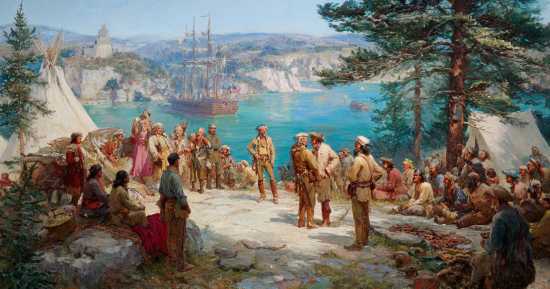
When rivers carved pathways through an untamed landscape, the Lewis and Clark Expedition Quiz opens a window into one of the most ambitious journeys in American history. This expedition was not only a test of endurance but also a story of discovery, mapping unknown lands, and forging connections that reshaped how people understood the continent. From navigating vast waterways to recording the remarkable diversity of plants and wildlife, Lewis and Clark’s venture stands as a testament to determination and curiosity. The Lewis and Clark Expedition Quiz invites you to step into a time when the horizon was a mystery waiting to be charted.
5 Serious Facts About the Lewis and Clark Expedition
- Many of their botanical and zoological discoveries became foundational to American science.
- The expedition produced the first comprehensive maps of several major U.S. river systems.
- Scientific observations included precise data on climate, soil, and natural resources.
- The team’s findings influenced future settlement patterns and trade routes.
- The expedition emphasized methodical record-keeping, setting a standard for later explorers.
The expedition began with a mission grounded in exploration rather than conquest. Lewis and Clark traveled thousands of miles through rivers, plains, and mountain ranges, documenting their findings in journals that remain invaluable today. They mapped territories with precision, interacted with local communities, and gathered scientific data that would enrich knowledge for generations. This journey, rich in observation and collaboration, transformed an abstract idea of the land into a detailed and living record. The Lewis and Clark Expedition Quiz explores these moments where endurance met curiosity, turning discovery into history.
Understanding the expedition means more than learning where they traveled. It means appreciating the immense planning, teamwork, and resilience that brought the journey to life. Each mile traveled, each sketch drawn, and each note written became part of a story that shaped how a continent was viewed and understood.
The Journey of Discovery
The Lewis and Clark Expedition combined practical navigation with scientific exploration. Their detailed maps brought clarity to previously uncharted regions, guiding future travelers and settlers. Along the way, they meticulously documented plant and animal species, adding to the world’s understanding of the natural environment. This blend of science and adventure turned their expedition into a landmark achievement of knowledge and exploration.
Equally impressive was their ability to adapt. The team relied on ingenuity and cooperation to overcome obstacles, using local knowledge to navigate difficult terrain. The Lewis and Clark Expedition Quiz highlights these moments of adaptation, showing how curiosity and persistence drove progress at every turn.
Legacy of the Expedition
The impact of Lewis and Clark’s journey reached far beyond its final destination. Their records became foundational tools for cartographers, scientists, and leaders seeking to better understand a rapidly changing continent. Their work set a precedent for exploration rooted in observation and documentation rather than speculation.
Today, the expedition remains a touchstone for anyone fascinated by discovery. Through their journals, sketches, and reports, we gain insight into both the land and the mindset of explorers who believed that curiosity could chart a path forward. The Lewis and Clark Expedition Quiz invites you to see this enduring legacy in a fresh light.
Why the Lewis and Clark Expedition Matters
This expedition was more than a journey; it was a turning point in how people connected with the unknown. By charting rivers, recording wildlife, and describing landscapes in vivid detail, Lewis and Clark transformed mystery into knowledge.
Their story shows how exploration can shape culture and understanding. The Lewis and Clark Expedition Quiz celebrates this transformative chapter in history, demonstrating that discovery is as much about curiosity as it is about distance traveled.
9 Fun Facts About the Lewis and Clark Expedition
- The expedition covered nearly 8,000 miles from start to finish.
- Lewis brought his Newfoundland dog, Seaman, along for the entire journey.
- They cataloged over 200 new plant species previously unknown to science.
- The team built Fort Mandan in present-day North Dakota to endure a harsh winter.
- They used portable sextants and compasses to chart their route accurately.
- Members of the expedition held regular dances and music sessions to boost morale.
- The journals included not only maps but detailed sketches of landscapes and wildlife.
- The expedition carried small trade goods to build relationships with local communities.
- Despite the vast distance, the expedition returned with all but one member alive.
Lewis And Clark Expedition – FAQ
The Lewis and Clark Expedition, commissioned by President Thomas Jefferson in 1803, aimed to explore and map the newly acquired western territory of the United States, known as the Louisiana Purchase. This expedition sought to establish an overland route to the Pacific Ocean, explore the flora and fauna of the region, and establish diplomatic relations with Native American tribes.
The expedition was led by Meriwether Lewis and William Clark, both experienced frontiersmen and military officers. Additionally, the group included a diverse team of approximately 30 individuals, including interpreters, hunters, and boatmen. Sacagawea, a Shoshone woman, played a crucial role as an interpreter and guide during the expedition.
The Lewis and Clark Expedition encountered numerous challenges during their journey, including harsh weather conditions, treacherous terrain, encounters with hostile Native American tribes, and scarcity of food and supplies. Despite these obstacles, the team’s resilience, resourcefulness, and collaboration enabled them to overcome these challenges and successfully complete their mission.
The expedition’s findings, detailed maps, and scientific discoveries significantly expanded the knowledge of the western territories of the United States. The information gathered during the expedition paved the way for future exploration, settlement, and development of the western frontier, ultimately contributing to the westward expansion of the United States.
